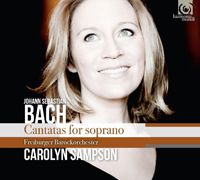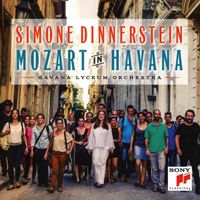Suite Cubed: Bach and Beyond by Umberto Clerici
‘Cellist Umberto Clerici wondered how eighteenth-century audiences listened to J.S. Bach’s cello suites, and what they heard and recognised in the music. Although Bach’s solo cello suites are variations of dance forms, he did not write them for dancing. Audiences perhaps experienced an emotional connection to the ‘stylisations’ of each dance, and (perhaps) therefore a physical connection. Contemporary audiences hear, experience and feel that music in a different way – our familiarity with common dance forms and dance traditions has been lost. Clerici has reframed Bach’s solo cello suites for a contemporary audience, taking the keys of C and D and structuring two new ‘suites cubed’. Bach’s music is at the centre of each suite, with additions from composers past and present. Antonio’s Ricercata XI predates Bach’s cello suites, and Giovanni Sollima’s Alone is not yet 20 years old. While Clerici has preserved the traditional ‘bipartite’ fast/slow and major/minor structures, he takes us on a colourful and imaginative journey through the solo cello repertoire, demonstrating his instrument’s full array of dissonances and textures.
Clerici is a magnificent cellist and musician. If a musician’s worth can be judged on how well he performs Bach, then Clerici has already excelled. The opening Prelude from Bach’s Cello Suite No. 6 has all the passion, energy and grit one might hope to hear – he certainly does not approach this music with caution! However, it’s Clerici’s performances of the contemporary compositions that I really enjoy. There is something almost violent about the way he attacks the opening of Ligeti’s fiendishly difficult Capriccio, which is in complete contrast to the following Langsam from Hindemith’s Sonata for Cello. Here, Clerici’s long, drawn-out lines are luscious and romantic, and he revels in Hindemith’s unsettling harmonies. Suite Cubed is a bold, exciting, and inspired exploration of solo cello repertoire.’
– Alexandra Mathew
J.S. Bach: Cantatas for Soprano by Carolyn Sampson
‘J.S. Bach composed for the voice like he did for a string instrument: highly chromatic, with irregular intervallic leaps, not necessarily taking the human limitations of singing into account. Bach asked a lot of his singers, composing long phrases (requiring good breath control), often in uncomfortably high tessituras (requiring impeccable vocal technique). Therefore, his cantatas are not for all voices. Rather, it takes an exceptional singer to successfully navigate Bach’s extraordinarily challenging – but heavenly – vocal music. Enter English soprano Carolyn Sampson, for whom the music of Bach is bread and butter. Her latest recording for Harmonia Mundi – three cantatas from Bach’s Weimar period – affirms her place as a top Bach interpreter.
Sampson’s radiant voice never betrays a hint of such challenges, and in fact she sings this repertoire as though it was composed with her voice in mind. Mein Herze Schwimmt im Blut is a case in point. Not only does Sampson sing with technical brilliance, but she imbues the music with feeling and meaning. I challenge you not to be moved by Sampson’s heart-rending interpretation of the dark ‘Stumme seufzer, stille Klagen’, or her jubilant and tastefully ornamented ‘Wie freudig ist mein Herz’. A fantastic recording from an accomplished soprano.’
– Alexandra Mathew
Mozart in Havana by Simone Dinnerstein & José Antonio Méndez Padrón
On the first listen through this album, I was presented with Mozart in his most recognisable form. There was bounce to the phrasing, with delicacy and depth to the timbre, without heaviness. The blending of the orchestra and the piano was effortless (as it should be) while Mozart’s delightful melodic lines were freed to enchant, as they always do in these popular concertos. The often cheerful and cheeky interplay between the two opposing parts of orchestra and piano gives you a lift in your step as you go about your day.
It wasn’t until the second time through, as I started doing research on the musicians, that I understood how amazing a thing it is: this seemingly simple recording. This is the first partnership between an American musician (Simone Dinnerstein) and a Cuban orchestra, in this case the Havana Lyceum Orchestra (Cuba’s National Youth Orchestra) since the beginning of more open political relations between the two countries. Not only that, but similar to the Venezuelan Young Orchestra’s world-changing debut in the face of such hardships, the fact that these young musicians (with all their physical hurdles of maintaining their instruments and keeping up with practice in an uncertain environment) makes this delightful interpretation of Mozart so much more poignant.
– Kate Rockstrom





